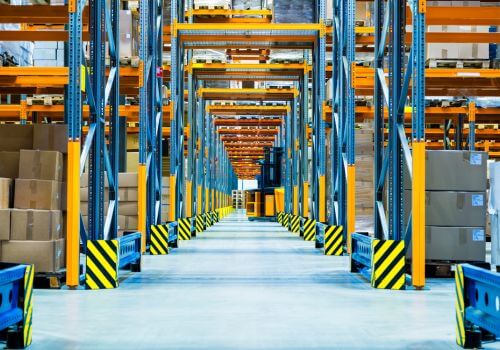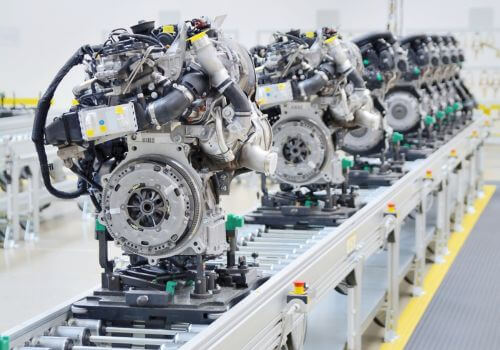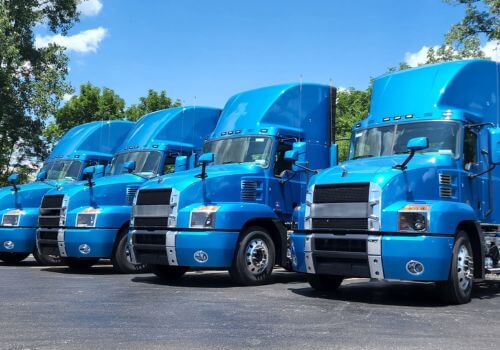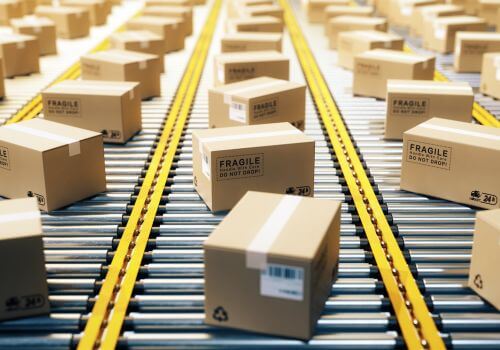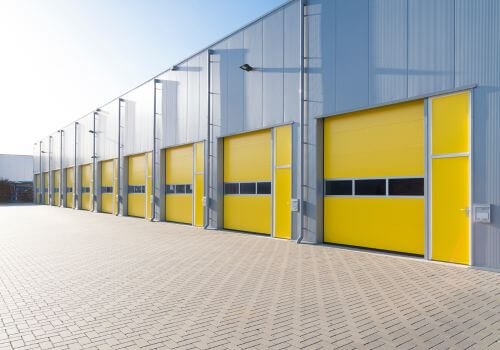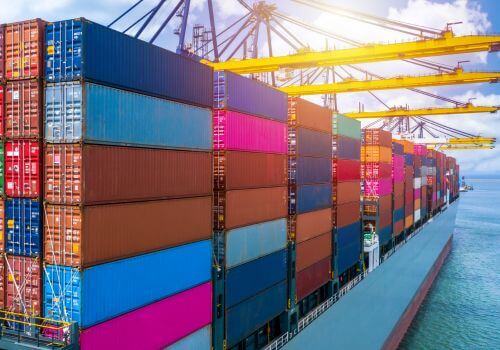In today’s fast-moving and complex world of logistics, businesses are looking for smarter, more efficient ways to manage their supply chains. With the growth of e-commerce, the rise of global trade, and the increasing need for advanced technology in logistics, companies require solutions that go beyond traditional methods. Enter 5PL (Fifth-Party Logistics)—the next level of logistics management that provides a comprehensive, end-to-end solution by integrating multiple logistics service providers, leveraging technology to create smoother, faster, and more cost-effective supply chains.
As businesses and industries grow, the need for more advanced logistics management becomes crucial, and 5PL is designed to handle these demands. But what exactly is 5PL, and why is it important? Let’s take a closer look at how it works, its significance in modern business, and examples of companies that have successfully adopted 5PL logistics.
What is 5PL (Fifth-Party Logistics)? The definition
5PL (Fifth-Party Logistics) is a system in which a logistics provider oversees the entire supply chain for a company, managing and integrating various third-party (3PL) and fourth-party (4PL) logistics providers. Unlike 3PL companies that handle specific logistics functions like warehousing and transportation, and 4PL companies that manage these services on a strategic level, 5PL providers go even further. They manage all logistics operations, often for multiple clients at the same time, using advanced technologies like Artificial Intelligence (AI), Internet of Things (IoT), machine learning, and Big Data analytics to improve every aspect of the supply chain.
5PL providers don’t just coordinate the flow of goods; they focus on creating efficiencies, reducing costs, speeding up delivery times, and ensuring that everything runs smoothly. These companies are vital for businesses that operate globally, deal with complex logistics, or need to scale rapidly.
Why is 5PL important in modern logistics?
As businesses grow and the world becomes more interconnected, supply chains are getting longer and more complex. This is where 5PL logistics providers shine—they have the tools and knowledge to streamline operations and manage everything from manufacturing to delivery on a global scale. Here’s why 5PL is becoming essential in today’s business landscape.
The growth of e-commerce and omnichannel logistics
E-commerce has changed the way businesses operate, with companies needing to fulfill orders faster and more efficiently than ever before. At the same time, businesses may sell through multiple channels (physical stores, online marketplaces, direct-to-consumer websites, etc.). This requires omnichannel logistics, where products must be managed across different platforms and delivered quickly and accurately to customers.
A 5PL provider plays a critical role here by integrating logistics services for companies that operate through multiple channels. For example, a 5PL provider might handle a company’s warehousing, shipping, returns, and last-mile delivery across all platforms, using technology to ensure that products move smoothly from warehouse to doorstep. This level of coordination is critical for businesses looking to keep up with the demands of modern consumers.
Technology-driven supply chain optimization
One of the key advantages of 5PL is its reliance on advanced technology. From AI-driven inventory management to real-time tracking systems and automated warehousing, 5PL providers use technology to optimize every part of the supply chain. For example, a 5PL provider can use predictive analytics to forecast demand and adjust inventory levels, ensuring that stockouts are minimized and overstocking is avoided.
Another example is the use of IoT and machine learning to monitor shipments in real time. If there’s a delay or an unexpected event (such as bad weather or customs issues), the system can adjust routes dynamically, ensuring that goods arrive on time. This kind of technological integration allows companies to be more flexible, responsive, and efficient.
Managing global supply chains
In today’s world, businesses often operate across multiple countries and regions, creating complex global supply chains. Coordinating these supply chains requires the ability to manage transportation, customs, warehousing, and distribution on an international scale.
5PL providers specialize in managing these global supply chains. They work with numerous third-party and fourth-party logistics providers to ensure that goods move smoothly across borders and that businesses can maintain a steady flow of products to their customers. By managing every aspect of the supply chain—from procurement to last-mile delivery—5PL providers take the pressure off businesses, allowing them to focus on other areas of their operations.
Promoting sustainability in logistics
As environmental concerns grow, businesses are under increasing pressure to reduce their carbon footprint and operate more sustainably. 5PL providers are responding by adopting green logistics practices, using technology to reduce fuel consumption, optimize transportation routes, and minimize waste.
For example, a 5PL provider might use route optimization software to reduce the distance trucks need to travel, cutting down on fuel usage and emissions. Additionally, by consolidating shipments and ensuring that trucks and warehouses operate at maximum efficiency, 5PL providers can further reduce environmental impact. Many 5PL providers also offer sustainable packaging and work with eco-friendly carriers to create greener supply chains.
Risk management in an uncertain world
Supply chains are always vulnerable to disruptions, whether caused by natural disasters, geopolitical events, or global pandemics. 5PL providers use advanced risk management techniques, including predictive analytics and real-time monitoring, to identify potential risks and respond quickly.
For example, if a 5PL provider detects a disruption (such as a port closure or a transportation delay), they can immediately reroute shipments or adjust delivery schedules to minimize the impact on the business. In addition, 5PL providers may use blockchain technology to improve transparency and traceability in the supply chain, ensuring that businesses have full visibility of their operations at all times.
4 real-life examples of 5PL in action
Several companies have successfully adopted 5PL logistics to streamline their supply chains and improve efficiency. Let’s take a look at some examples:
1. Amazon and Alibaba (leaders in 5PL)
Both Amazon and Alibaba are prime examples of companies that have embraced 5PL logistics. These e-commerce giants manage vast global networks of suppliers, warehouses, and delivery systems, all while leveraging advanced technologies like AI, robotics, and drone delivery systems.
Amazon, for example, uses Kiva robots in its warehouses to automate the process of picking and packing orders, while its Prime Air program aims to deliver packages using drones. Alibaba, meanwhile, has built a massive logistics ecosystem that relies on Big Data analytics to optimize deliveries for its millions of customers. These companies don’t just manage their logistics—they integrate and optimize the entire supply chain using 5PL techniques.
2. Flexport (a digital freight forwarder)
Flexport is a company that operates more like a 5PL provider, using a cloud-based platform to manage global trade and logistics for its clients. Flexport handles everything from customs clearance to international shipping, using technology to provide businesses with real-time tracking, performance analytics, and supply chain optimization.
By aggregating and managing services from multiple 3PL and 4PL providers, Flexport ensures that its clients can run efficient, cost-effective global supply chains without having to manage the logistics themselves.
3. DHL Supply Chain Solutions
As one of the largest logistics companies in the world, DHL offers end-to-end supply chain management services for its clients. In many cases, DHL acts as a 5PL provider, managing global logistics networks for businesses while integrating AI, smart warehousing, and automation to improve efficiency.
DHL’s ability to operate on a global scale, manage multiple supply chain providers, and leverage advanced technology makes it a leader in 5PL logistics.
4. ShipBob (end-to-end fulfillment for e-commerce)
ShipBob provides e-commerce businesses with a fully integrated fulfillment solution, handling everything from warehousing to last-mile delivery. ShipBob leverages technology to optimize shipping routes, reduce delivery times, and improve inventory management, acting as a 5PL provider for small and medium-sized businesses.
By managing logistics for its clients, ShipBob allows e-commerce companies to focus on their core business operations while ensuring that products are delivered quickly and efficiently.
What are the benefits of 5PL?
Now that we’ve seen how 5PL works and some real-world examples, let’s explore the benefits of adopting 5PL logistics:
Significant cost savings
One of the most obvious benefits of 5PL is cost efficiency. By using technology to optimize routes, reduce transportation costs, and improve inventory management, businesses can significantly lower their logistics expenses. For example, better route planning can reduce fuel consumption, while automation in warehouses can cut down on labor costs.
Scalability for growing businesses
As businesses grow, their logistics needs also expand. A 5PL provider can scale up or down based on the company’s requirements, without the need for businesses to invest in their own logistics infrastructure. Whether it’s expanding into new markets or handling seasonal spikes in demand, 5PL providers ensure smooth operations at all times.
Faster and more flexible deliveries
5PL providers can offer faster delivery times and greater flexibility in shipping options. With real-time data and advanced tracking systems, businesses can monitor their shipments, reroute deliveries, and make adjustments as needed, ensuring that products get to customers quickly and efficiently.
Data-driven decision making
The wealth of data generated by 5PL logistics systems allows businesses to make informed decisions. Predictive analytics can identify trends, spot potential risks, and highlight areas for improvement, helping companies optimize their supply chains. This data-driven approach makes it easier for businesses to adapt to changing market conditions and customer demands.
Ability to focus on core competencies
Perhaps the most important benefit of 5PL is that it allows businesses to focus on their core activities, such as product development and customer service. By outsourcing logistics to a 5PL provider, companies can concentrate on what they do best, while the 5PL provider handles the complexities of supply chain management.
In summary, 5PL (Fifth-Party Logistics) is a logistics provider that manages and optimizes entire supply chains for businesses by coordinating multiple third-party and fourth-party logistics providers, using advanced technologies like AI, IoT, and Big Data to streamline global operations.


